Advertisements
Advertisements
प्रश्न
The base of the parallelogram is 16 cm and the height is 7 cm less than its base. Find the area of the parallelogram
उत्तर
In a parallelogram
Given base b = 16 cm, height h = base – 7 cm
= 16 – 7
= 9 cm
Area of the parallelogram = (base × height) sq.units
= 16 × 9 cm2
= 144 cm2
Area of the parallelogram = 144 cm2
APPEARS IN
संबंधित प्रश्न
Find the area of the following parallelogram:
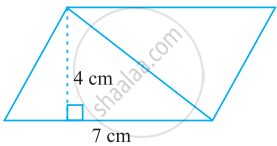
The area of parallelogram whose base 10 m and height 7 m is
A square and a parallelogram have the same area. If the side of the square is 48 m and the height of the parallelogram is 18 m. Find the length of the base of the parallelogram
In a parallelogram PQRS (See the diagram) PM and PN are the heights corresponding to the sides QR and RS respectively. If the area of the parallelogram is 900 sq.cm and the length of PM and PN are 20 cm and 36 cm respectively, find the length of the sides QR and SR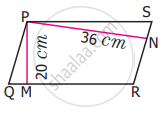
The area of the parallelogram ABCD is 1470 sq.cm. If AB = 49 cm and AD = 35 cm then, find the height, DF and BE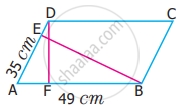
Find the missing value:
| Base | Height | Area of parallelogram |
| 15.6 cm | ______ | 16.38 cm2 |
Area of parallelogram ABCD (see the figure) is not equal to ______.
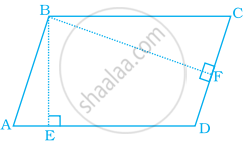
In the given figure, EFGH is a parallelogram, altitudes FK and FI are 8 cm and 4 cm respectively. If EF = 10 cm, then area of EFGH is ______.
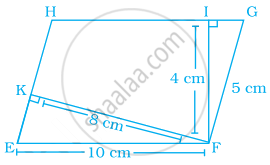
Perpendicular dropped on the base of a parallelogram from the opposite vertex is known as the corresponding ______ of the base.
In the given figure, find the area of parallelogram ABCD, if the area of shaded triangle is 9 cm2.

